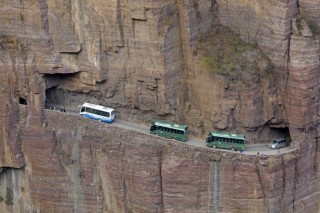From Skyscrapers To Subway
Tokyo, the capital and largest city of Japan, stands as the political, economic, and cultural epicenter of the nation.
Nestled in the eastern region of Honshu Island, along the shores of Tokyo Bay, it pulsates with vitality, modernity, and a vibrant blend of cultures.
Tokyo is comprised of 23 special wards, in addition to 26 cities, 5 towns, and 8 villages, collectively spanning an impressive area of approximately 2,194 square kilometers, solidifying its position as one of the most densely populated cities globally.
Tokyo thrives as a cosmopolitan marvel, boasting contemporary skyscrapers, bustling commercial hubs, diverse cultural establishments, a plethora of museums, and haute cuisine dining experiences.
Furthermore, Tokyo leads the pack in technological innovations and fashion trends, serving as the headquarters for many globally acclaimed technology companies and fashion behemoths.
The city is home to iconic landmarks, including the Tokyo Tower, the revered Imperial Palace, Ueno Park, the splendid Shinjuku Gyoen National Garden, Omotesando, and the electrifying Akihabara district, among others.
Tokyo's extensive shopping districts, such as Ginza, Shinjuku, and Shibuya, offer a delightful fusion of retail therapy and immersion in Japanese local culture, catering to visitors seeking unique experiences.
In summation, Tokyo presents itself as an exuberant and captivating destination that beckons tourists and beckons residents from around the globe.
Tokyo's subway system ranks among the world's most advanced and intricate. It stands as one of Japan's, largest urban railway networks, providing efficient, swift, and convenient transportation solutions for Tokyo's inhabitants and its visitors. Here are several key aspects of Tokyo's Metro system development:
1. Dense Network: The Tokyo subway network weaves an intricate web, encompassing every nook and cranny of the urban landscape, spanning the 23 special wards and adjacent cities.
A multitude of lines intersect, forming a labyrinthine transportation network, ensuring passengers seamless access to various pivotal locations within the city.
2. Efficient Operations: Renowned for its operational efficiency and punctuality, the Tokyo subway system features frequent train services, minimizing wait times. This efficiency is crucial to accommodate the colossal passenger demand, particularly during peak hours.
3. Technological Advancements: The Tokyo Metro system remains at the forefront of technological innovation, employing advanced signaling systems, automated driving technology, and real-time information updates to enhance safety and service quality.
4. Subway Culture: The unique cultural aspects of Tokyo's subway system deserve special mention. Passengers often experience the distinctive phenomenon of "station staff adeptly managing crowded trains" during the morning and evening rush hours, reflecting Japanese social etiquette and norms.
5. Addressing Population Pressures: The Tokyo subway system undergoes continuous expansion and enhancement to address the mounting pressure from a growing population.
As the Tokyo metropolitan area evolves, the subway system extends its reach to meet the transportation demands of emerging districts.
You may like:



